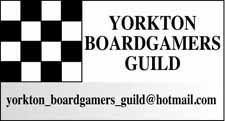So to start I would like to welcome readers back to the world of board game reviews. A summer of flood basically had games in storage, and then it was the holiday season, but now with a new year, it's time to get back to the gaming table.
This week we look at a really enticing recent offering, at least if you like abstract strategy games.Tacticum is a game which is supposed to mimic what may have been a board game tool to teach Roman Centurions tactics and strategy. Sounds pretty cool, and it really is.
While only a 2009 release from the Gamealogical Institute, Tacticum has a much 'older' feel to it. You really get the feeling it could have been a game played by Centurions.
The game uses blank black and white dice as pieces. They work amazingly efficiently, and look great as pieces. It's really surprising more games haven't used the same idea for pieces actually.In this case the pieces even come with nice velveteen bags for storing, a nice touch.
The play mat is a simple cloth-like paper, nicely marked around the edge with Roman soldier artwork at each corner surrounding the 8X11 grid area. The board rolls nicely to slip into the storage tube.
So the components, aesthetics and storage of the game are excellent.
And that brings us to game play.
Designer Tony Ripley impresses here too.
Ripley uses the dice pieces in a rather unique way. A lone dice is a 'squad' with its own movement pattern. When four squads come together in a block, they former a 'square' and the four pieces can then be moved at the same time, albeit with a more limited movement pattern.
Three squads in a row create a 'column' and it too can be moved as a group, with yet another pattern.
At anytime a column or square can be broken up by choosing to move a single squad.
Capture of a squad is by 'flanking', basically sandwich a single squad, or line of squads between two of your pieces.
However squads in a square can't be flanked.
A squad must be attacked with a column, which captures one squad of the square.
The tactics can be rather involved, as you must change formations based on what is happening on the board.
Each player also has a 'Legion Standard' a unique which is essentially the leader piece of a force.
Now the formation tactics make the game creative, but where the game really takes off is that there are different 'war' scenarios which can be played. The base set comes with two scenarios, and additional ones are available at www.gamealogical-institute.com
Think about how chess might be made better with scenarios. Bored with the same game over, and over, play a different scenario to switch things up.
It is likely the Institute, and others will add new scenarios over time, and that bodes well to keep the game fresh too.
All together Tacticum is a definite winner and highly recommended for its interesting piece movement and game play options.




